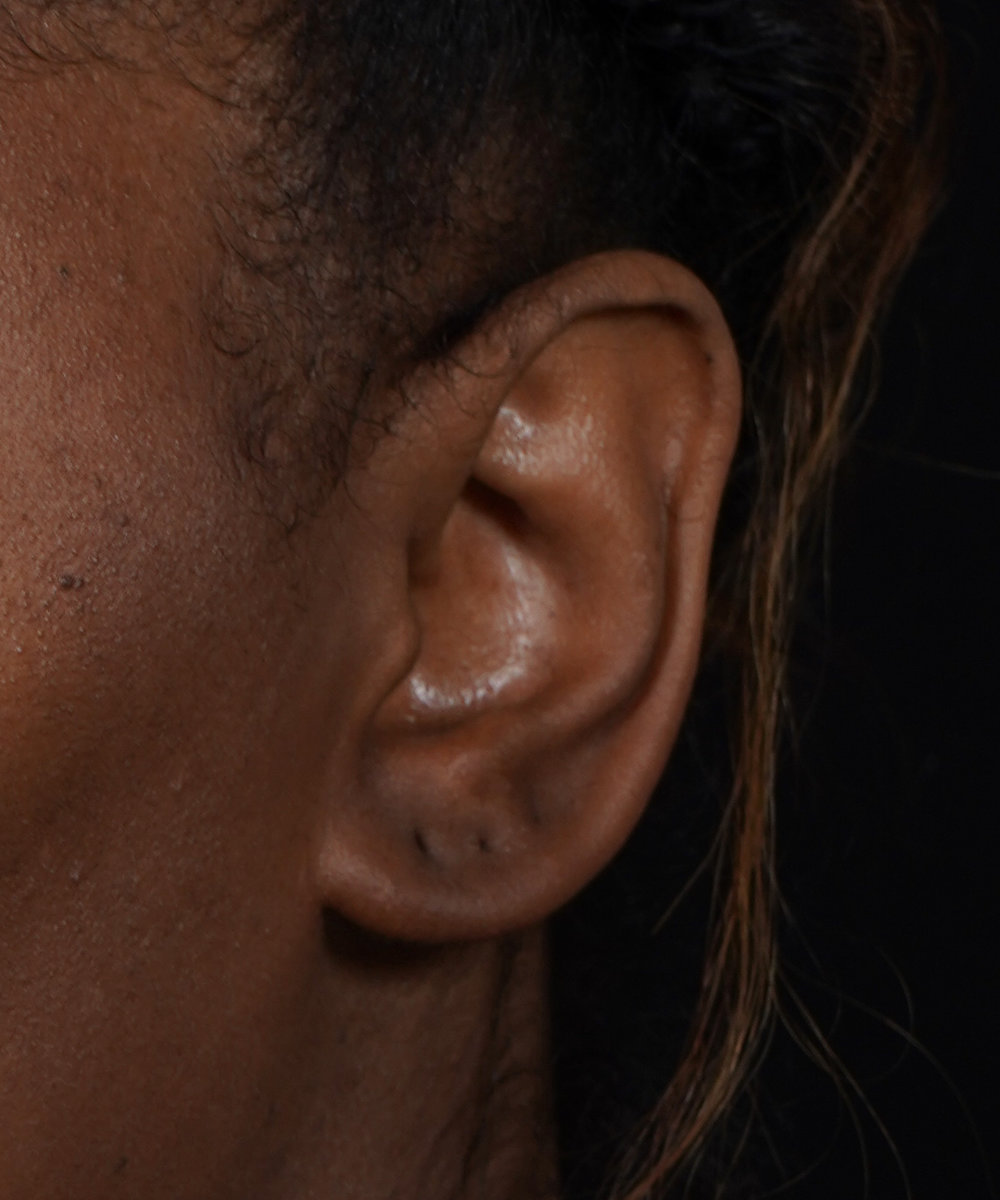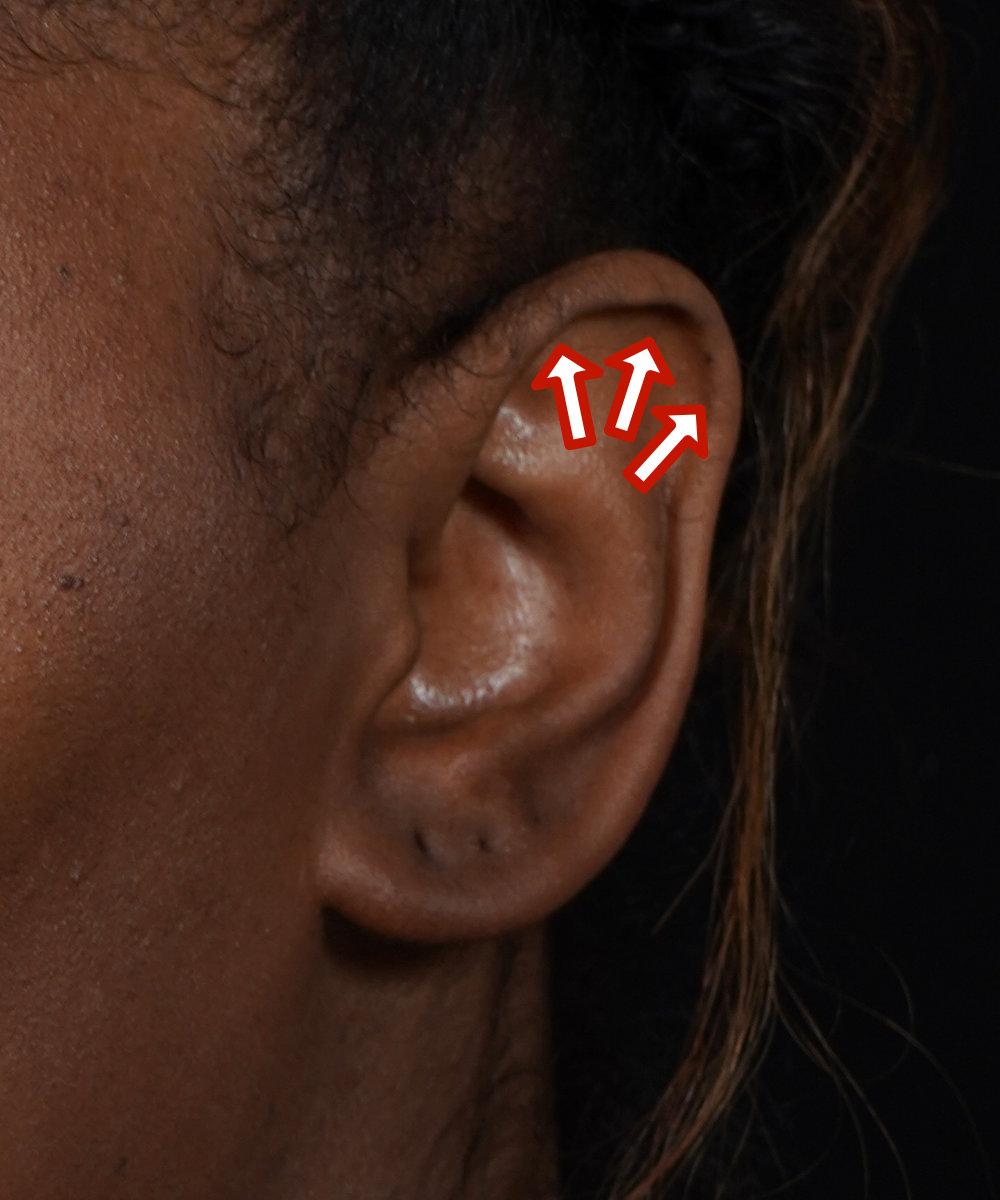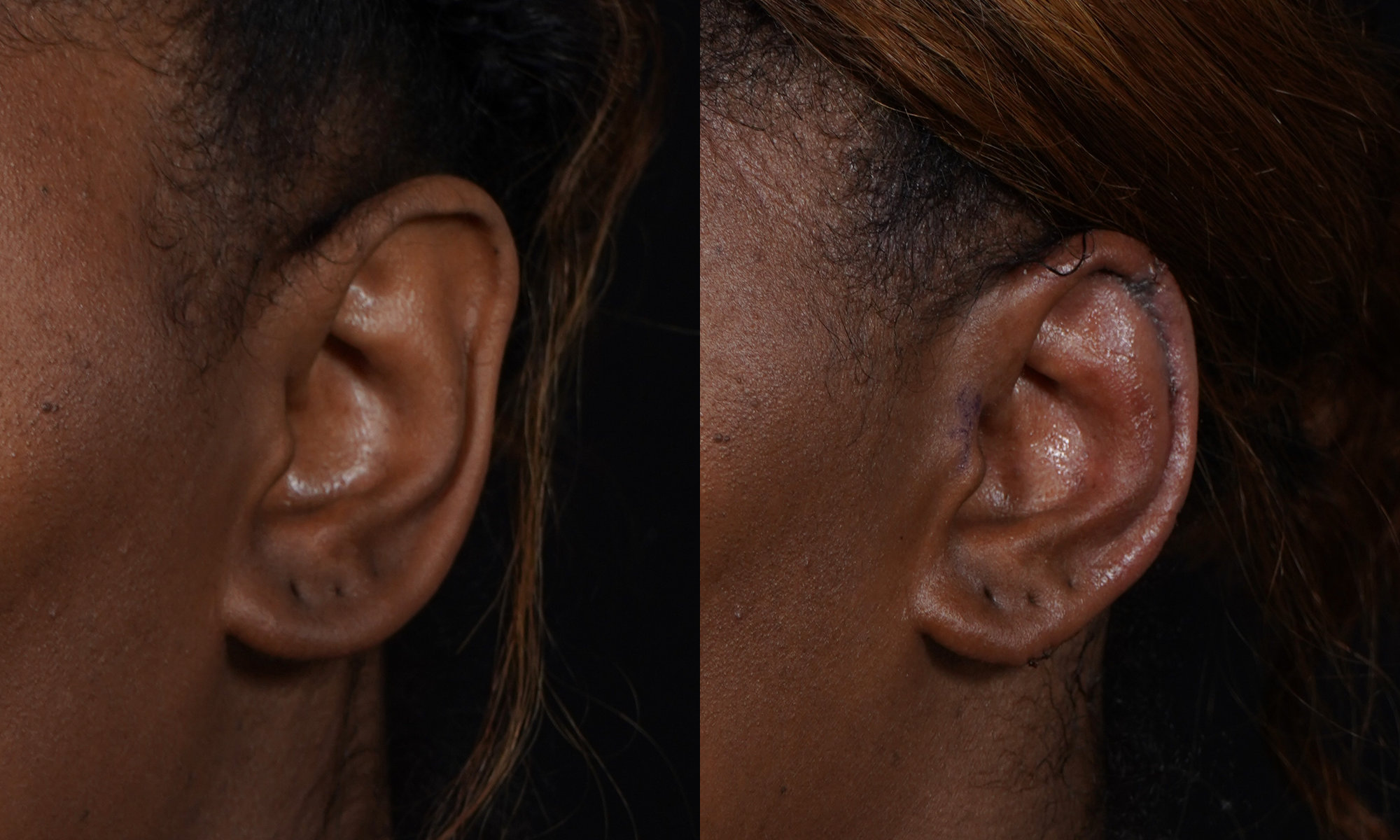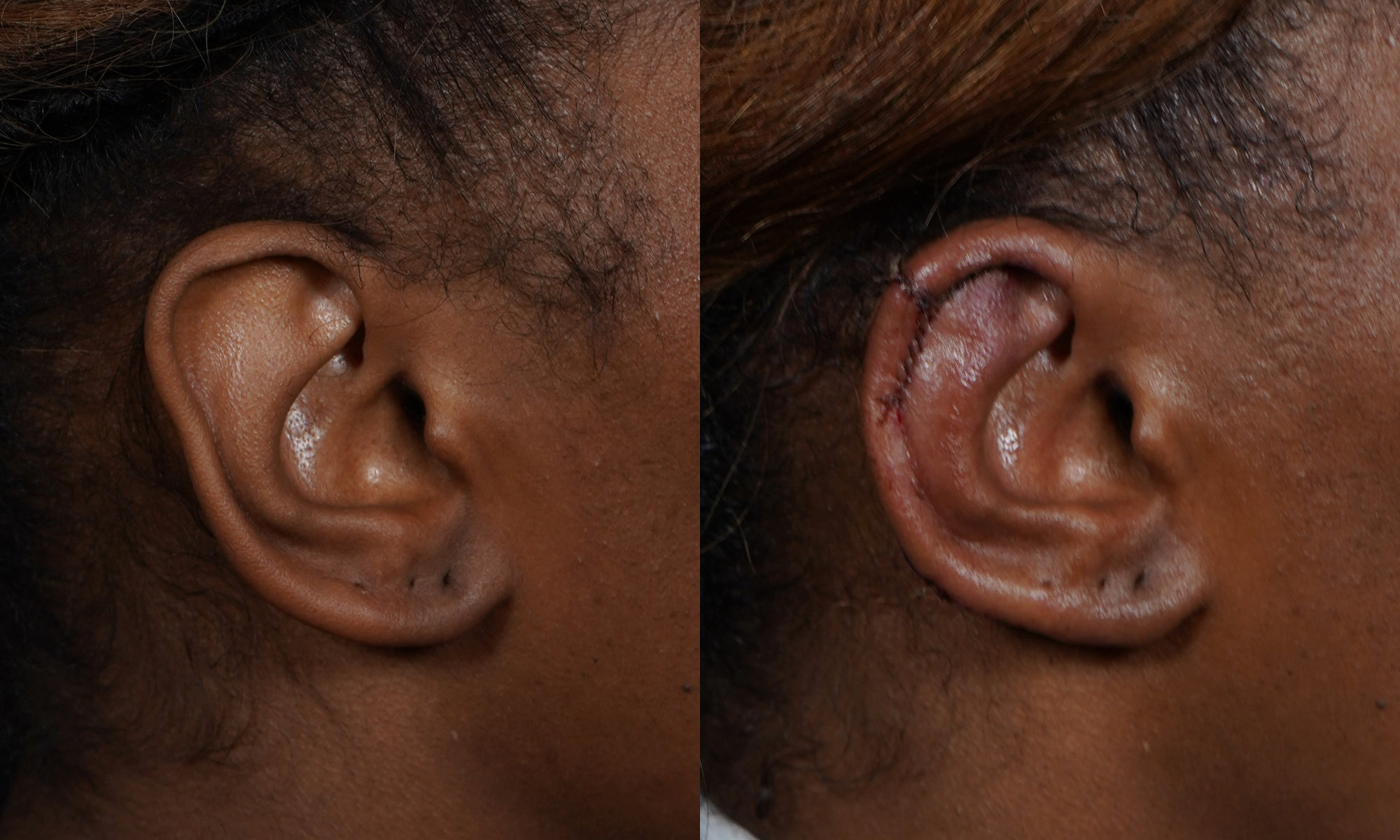 Here is a fantastic macrotia ear reduction case that vividly demonstrates how Dr. Hilinski can make large ears much smaller in size.
Here is a fantastic macrotia ear reduction case that vividly demonstrates how Dr. Hilinski can make large ears much smaller in size.
This is a patient who – like so many of our cosmetic ear reduction patients – discovered Dr. Hilinski online in her attempt to find someone who could shrink her large ears down in size. Now Dr. Hilinski has been performing this exact operation for many years now. But despite this, patients with excessively large ears were challenged in finding our website given the fact that so few plastic surgeons offered this procedure. Fortunately, this trend has shifted as Dr. Hilinski has become increasingly more well-known as the ‘go-to’ plastic surgeon when you want your ears made smaller in size. That is largely because he is one of less than a handful of board certified plastic surgeons in the world who has documented experience in actually making large ears smaller in size. In fact, he is one of the only cosmetic ear surgeons out there who has a robust gallery of before and after photos that show how he can make someone’s large ears smaller in size. As a result, more and more patients with large ears are now discovering Dr. Hilinski online from all over the world – further contributing to his international reputation as the guy who can make you a ‘designer ear’ in about an hour.
This very pleasant lady from Chicago finally found our macrotia photo examples on the web and immediately reached out to consult with Dr. Hilinski in the hopes he could help her with ears that were excessively large in size. In her own words, she was bothered by the appearance of her ears for decades – often times doing everything in her power to keep them hidden from view. This followed many years of schooling where she admitted to being bullied by classmates who readily made fun of the shape and size of her ears. Unfortunately for her, when she researched options to reshape her ears to be smaller in size, she constantly came across otoplasty, or ear pinning. Although otoplasty surgery is a great option for ears that stick out too far from the side of the head, pinning and ear back does very little to help in the situation where the ear is too large in size and/or is abnormally shaped. In fact, a sizable percentage of Dr. Hilinski’s macrotia ear reduction surgery patients have already undergone attempted otoplasty – only to find out that the surgery didn’t fix their perceived problem. Why? Because the ears were still too large or unusually shaped. When you look at this particular case example, you can easily see from this oblique view just how abnormal the ear appears. The diagrammed photo provided here literally points to the main problem with scapha enlargement – where the top portion of the ear is overly developed and looks as if it extends up and back too far. If you follow the outer border of the ear (called the helical rim), you will quickly notice that there is almost an ‘outpouching’ where the normal, rounded curvature of the ear has been replaced with an area that seems to extend or protrude beyond where the natural curve should be. This was precisely what bothered this patient – and so many others – and prompted her to consider making the ears smaller in size.
Making an Ear Smaller in Size
Dr. Hilinski performed his famed macrotia ear reduction surgery to help make the ear smaller in size while restoring the helical rim contour to a more natural shape. In addition, he recommended a slight reduction of the earlobe to make it appear less bulky. The overall goal was to make the ears look smaller in size so this combination was a perfect fit for her.
The actual surgery took less than 2 hours to perform under local anesthesia. This means that the ear reduction surgery did not require a general anesthetic where she would have been put to sleep. Once Dr. Hilinski injects the local anesthetic, the ears go completely numb and the patient feels no pain. A huge advantage of making smaller ears with this approach is that patients are not exposed to the risks of having general anesthesia and recover much quicker after the surgery.
A fairly light head wrap is placed around the ears to help reduce initial surgical swelling. And since this is in place, there is really no wound care on the patient’s behalf during these first few days. Once the wrap is removed, we do ask that you clean the incisions properly with specific instructions provided by our office.
Large Ear to Small Ear
This patient needed to get back to Chicago a little sooner than planned, so she ended up seeing Dr. Hilinski for her 1st postoperative visit just 36 hours after macrotia ear reduction. Fortunately, he was able to remove her ear bandages and the swelling was very mild as was the bruising. In fact, here are her early results at only 36 hours out from surgery. As you can see, she now has a much smaller ear that has a more natural shape. More specifically, the helical rim curve has been reshaped to look totally normal now that the extra scapha cartilage and skin have been removed. No longer does she have that extra extension coming off the top of her ear. Instead, she now has an ear that is overall smaller in size, shorter in height, and simply more proportional. Over time the suture lines will slowly fade as the scar softens and become less visible to the naked eye. But even at this point, the patient would gladly exchange some scarring for an ear that has been reduced in size and has just the right curvature!


